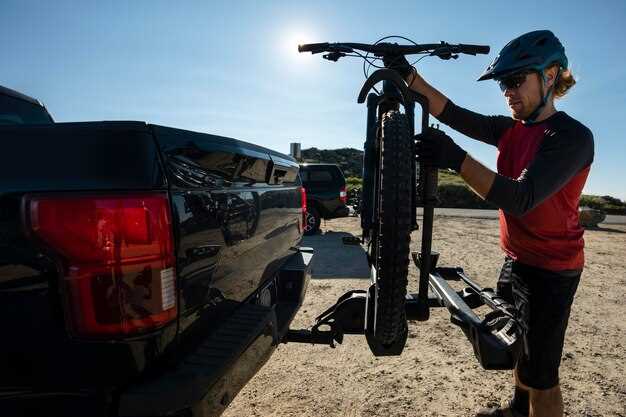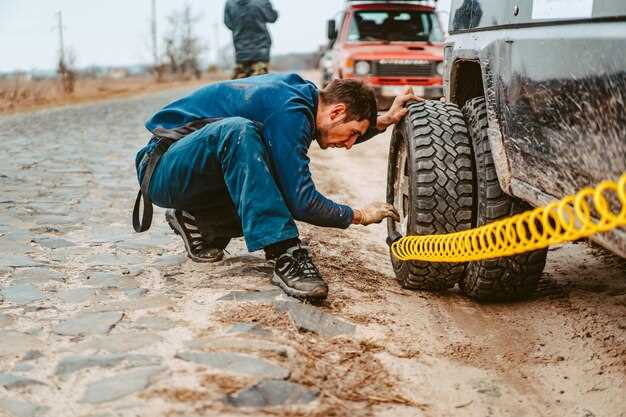Understanding Jeep axles and when to upgrade


When it comes to off-road performance, the axles in your Jeep play a crucial role in maintaining strength and durability. These components are responsible for transferring power from the drivetrain to the wheels, significantly impacting your vehicle’s ability to navigate rugged terrains. Understanding the intricacies of Jeep axles is essential for any enthusiast looking to enhance their off-roading experience.
The factory-installed axles may suffice for casual driving, but serious off-roaders often require upgrades to improve performance and reliability. Upgrading your axles can provide enhanced torque capacity, better articulation, and increased load-bearing strength. In this article, we delve into the various types of axles, the common weaknesses found in OEM units, and the best practices to follow when considering upgrades to ensure your Jeep can handle any challenge.
From choosing the right materials to understanding the benefits of different axle ratios, making informed decisions about your Jeep’s axles will pave the way for greater strength and performance. Join us as we explore the essential components of Jeep axles and share expert tips on how to maximize your vehicle’s capabilities for the ultimate off-road adventures.
Identifying Your Jeep’s Dana Axle Type for Proper Upgrades

Determining the specific Dana axle type in your Jeep is crucial for effective upgrades that enhance performance and strength. Dana axles are commonly found in a variety of Jeep models, each offering different capabilities and requirements for modification. Knowing the exact axle type helps in selecting appropriate parts, ensuring that upgrades do not compromise the integrity of your vehicle.
Start by inspecting the axle housing, which usually has identification numbers stamped on its surface. Common Dana axles in Jeeps include the Dana 30, Dana 44, and Dana 60. The Dana 30 is typically found in early models and offers moderate strength, while the Dana 44 provides a more robust option suitable for heavier loads and off-road use. The Dana 60, known for its exceptional strength, is ideal for serious off-roading and can handle larger tires and more demanding conditions.
Additionally, check your Jeep’s year and model specifications, which can provide clues about the axle type. For instance, newer Wrangler models often come equipped with the Dana 44 as a standard feature, especially in the Rubicon editions. Understanding these nuances allows you to make informed decisions about which upgrades to pursue, whether it’s gearing changes, locker installations, or simply reinforcing existing components.
In conclusion, accurately identifying your Jeep’s Dana axle type is essential for implementing upgrades that optimize strength and performance. This knowledge not only guides your upgrade choices but also ensures the longevity and reliability of your vehicle during challenging off-road adventures.
Understanding Axle Strength Ratings and Their Impact on Performance

Axle strength ratings are crucial when it comes to understanding the performance capabilities of your Jeep. The strength of an axle directly influences how much torque it can handle, the type of terrain it can navigate, and ultimately, the durability of your drivetrain during rigorous off-road activities.
One of the most recognized names in axle manufacturing is Dana. Dana axles are engineered with various strength ratings to accommodate different vehicle applications, from light-duty models to heavy-duty options designed for extreme off-roading. These ratings are often determined by factors such as material composition, design features, and overall build quality.
The strength of an axle is typically rated in terms of its capacity to withstand twisting and bending forces. This capacity is measured in pounds of torque. For Jeep enthusiasts, understanding this measurement helps inform decisions regarding upgrades, such as reinforced differentials and heavy-duty axle assemblies. Using a stronger axle can significantly enhance performance, allowing for higher torque loads that are necessary when climbing steep inclines or navigating rocky terrains.
Additionally, the impact of axle strength on performance extends beyond mere torque capacity. A robust axle contributes to better handling and stability, which is particularly important during off-road excursions. When encountering obstacles, a high-strength axle can absorb impacts and reduce the risk of bending or breaking, ensuring that the drivetrain remains intact and functional.
Ultimately, when selecting axles, enthusiasts must weigh their specific needs against the available strength ratings. Choosing a higher-rated axle can provide the peace of mind needed when tackling challenging trails, while also enhancing overall vehicle performance. Investing in the right axle, particularly from reliable manufacturers like Dana, is key to achieving optimum performance and longevity in any off-road adventure.
Top Upgrades for Enhancing the Durability of Dana Axles
When it comes to off-roading, Dana axles are known for their strength and reliability. However, to maximize their performance and longevity, certain upgrades can significantly enhance their durability. Here are some of the best practices.
First and foremost, consider installing differential covers that are reinforced. Heavy-duty covers not only provide additional protection against impacts but also help to dissipate heat, which is crucial for maintaining the integrity of the axles during extreme conditions.
Another essential upgrade is to replace factory axle shafts with stronger aftermarket options. Upgraded axle shafts made from higher alloy materials offer increased tensile strength and improved resistance to bending and twisting forces, which is particularly beneficial during aggressive maneuvers.
Adding a truss system is highly recommended for enhancing the overall strength of the axle housing. Trusses distribute stress more evenly across the structure, preventing bending and flexing during extreme strains, thus prolonging the lifespan of the axles.
Investing in high-performance U-joints is also a game changer. Traditional U-joints are often a weak point in the drive train. Upgrading to heavy-duty U-joints can significantly increase the strength and durability of the axles, reducing the risk of failure during hard use.
Finally, installing a proper gearing system tailored to your specific driving needs can ensure that the axles operate efficiently and within their designed limits. This not only enhances performance but also minimizes wear and tear on the axles over time.
